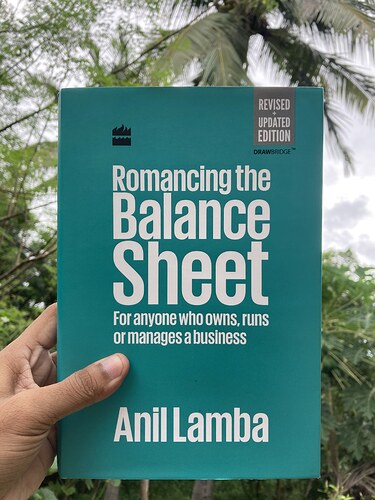Romancing the Balance Sheet, Anil Lamba, 2016 - Having taught myself this skill of reading financial statements by trial-and-error over the last few years, I thought I would get nothing out of this book but this book has something for everyone, from people who have no knowledge of what a balance sheet or profit-and-loss statement is, to someone who is a seasoned professional. This is a very written and well-presented book both in terms of the examples chosen to explain as well as the way information was laid-out and highlighted.
Some of the things I learnt afresh or reinforced were on how Inventory management, either as a policy or through intentional mis-statements can impact profits. It was also new for me the easy classification of an expense vs capitalized as an asset - purely based on the lifetime. Sometimes even these basic things can get convoluted when a pharma firm capitalizes its RnD or an established e-Commerce firm pays no tax, by expensing its brand-building in the PnL. The book simplifies it nicely by saying that anything that outlives the BS date is an asset - very elegant way of thinking but still leaves a lot to subjectivity.
I very much liked the Sources vs Uses to understand the Liabilities and the Assets side, which sounds more plain-English. One of the important things I learnt a couple of years back was on knowing what cost of capital was and understanding its importance - this is analysed in great depth in this book from a “feel” perspective than just plain theory and percentages.
Some of the best chapters in the book were on Operating and Financial leverage and Current Ratios and how these things impact businesses and how to optimize such leverage based on business and financial cycles. The discussion on Op. leverage, working capital and risk actually runs through the mid-to-end of the book, focusing mainly on unit economics (what the author called “Contribution” and “PV Ratio”). There are several counter-intuitive points where discounting is actually beneficial to an Organisation. These are things I never thought about in the way it was discussed here in depth. I was glad to have stuck through till the end of the book because a bulk of the learning is in the second half for people who are self-taught like me. For someone who has run a business, this might be second-nature. This book should be recommended reading for everyone. 11/10

